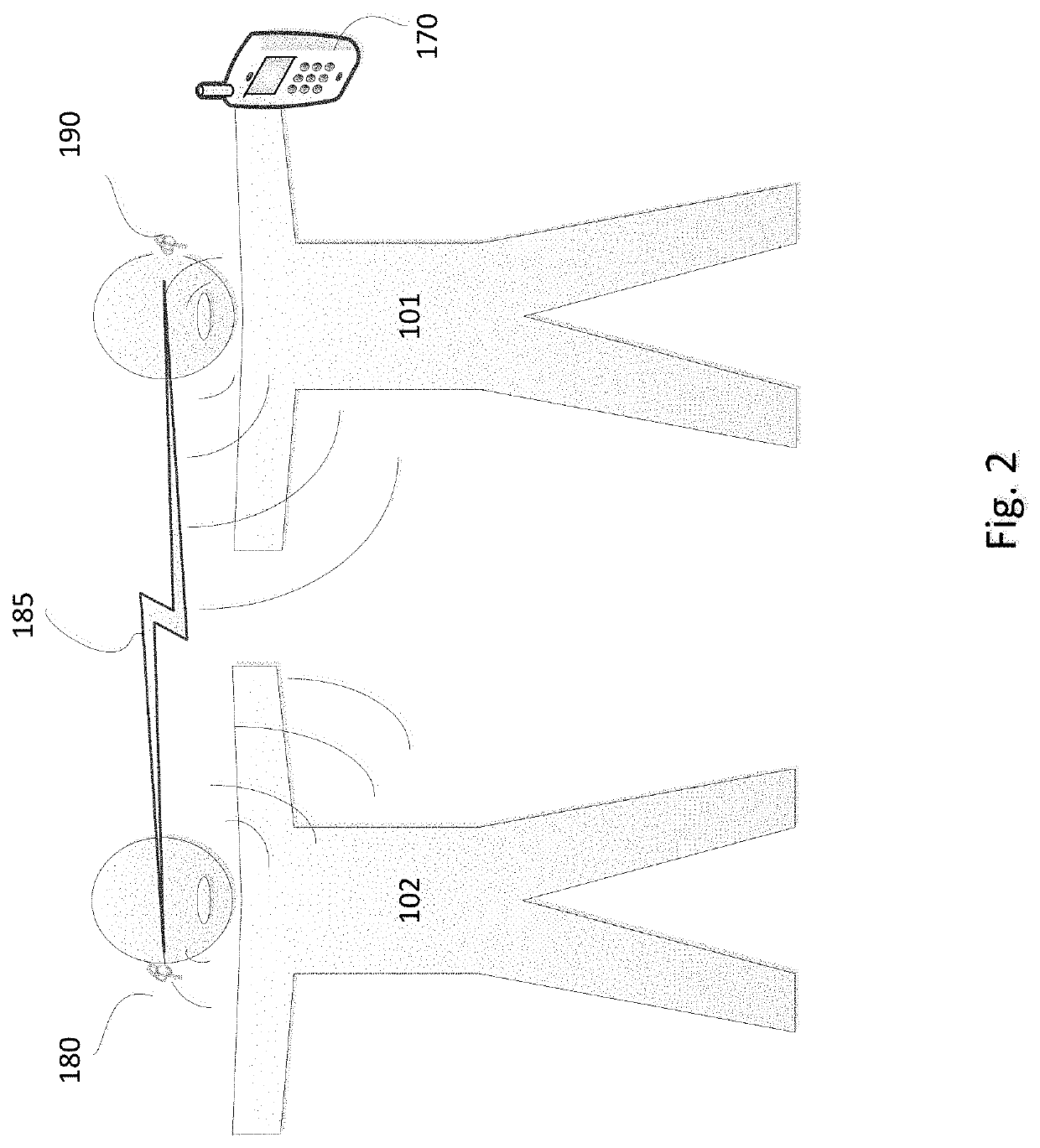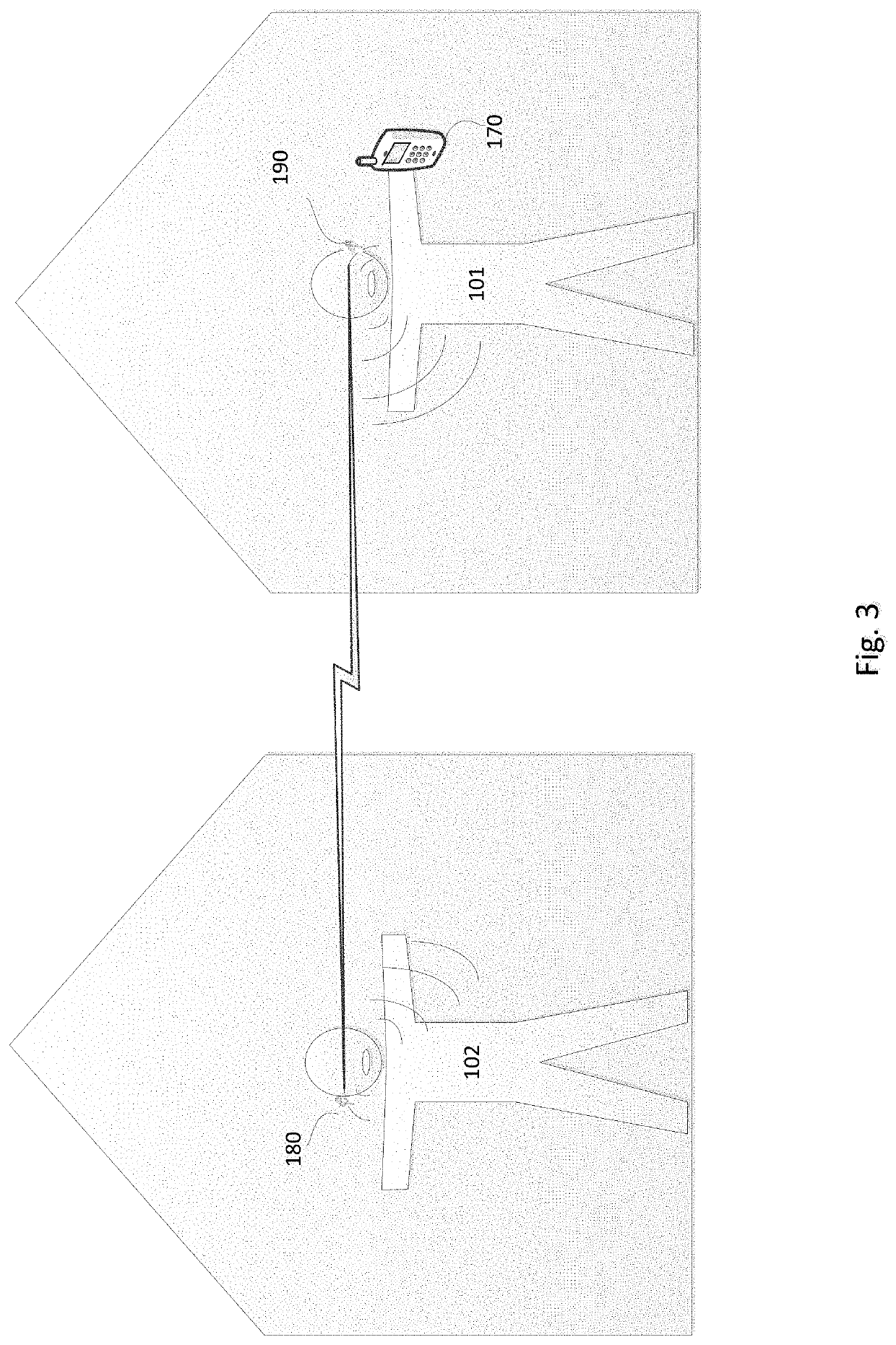Mixing Microphones for Wireless Headsets
a wireless headset and microphone technology, applied in the field of audio playback systems, can solve problems such as user experience problems, and achieve the effect of improving user experience and audio playback quality, and improving audio quality
- Summary
- Abstract
- Description
- Claims
- Application Information
AI Technical Summary
Benefits of technology
Problems solved by technology
Method used
Image
Examples
Embodiment Construction
Overview
[0018]A sideband channel between two audio playback devices, such as two earbuds, may be used to transmit microphone data from a second device with an “inactive” microphone to a first device with an “active” microphone. As used in this disclosure, “active” and “inactive” do not necessarily refer to whether the microphones capture audio, but rather refer to whether the microphones are in a primary device directly connected to a host or a secondary device. The first device mixes the microphone data as it comes in. This solution is seamless, in that the user's voice is captured regardless of whether the first device having the primary microphone is worn by the user, by another user, or not worn at all.
[0019]To minimize delay resulting from the second device encoding and transmitting data, the data may in some examples by encoded as L2CAP and mixed in on the first device as it is received. This should alleviate bandwidth and performance concerns of trying to maintain two active ...
PUM
 Login to View More
Login to View More Abstract
Description
Claims
Application Information
 Login to View More
Login to View More - R&D Engineer
- R&D Manager
- IP Professional
- Industry Leading Data Capabilities
- Powerful AI technology
- Patent DNA Extraction
Browse by: Latest US Patents, China's latest patents, Technical Efficacy Thesaurus, Application Domain, Technology Topic, Popular Technical Reports.
© 2024 PatSnap. All rights reserved.Legal|Privacy policy|Modern Slavery Act Transparency Statement|Sitemap|About US| Contact US: help@patsnap.com










